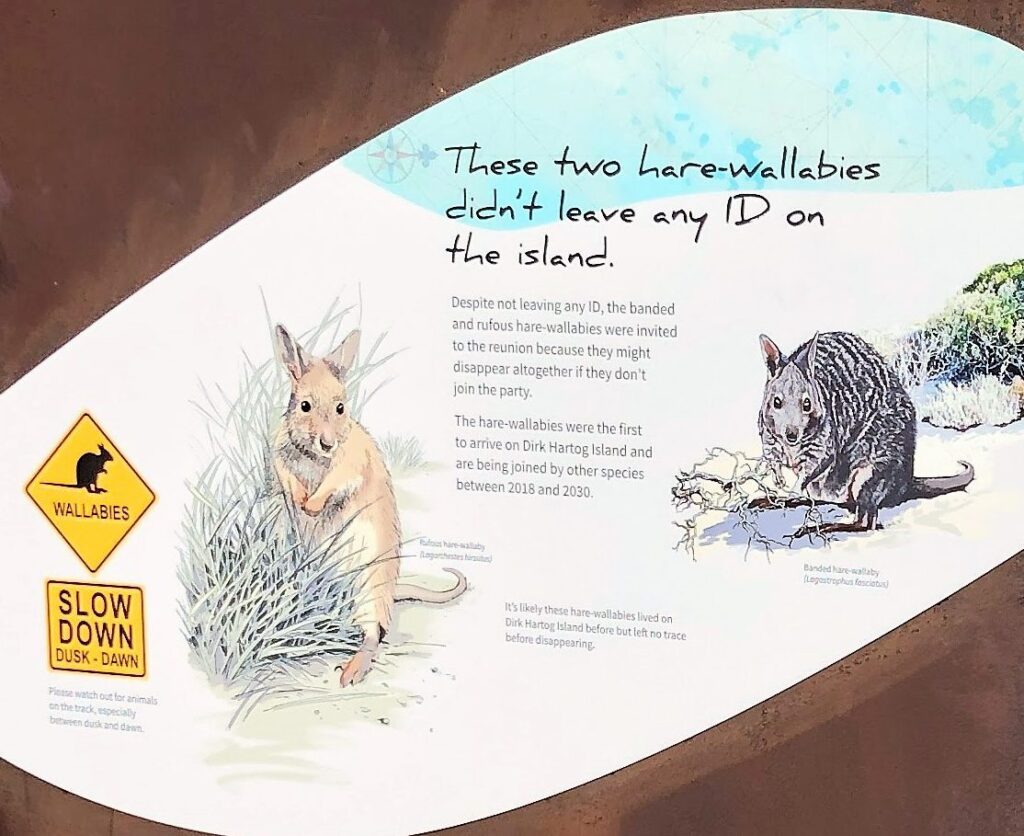
Project Aim
Our aim is to support the Return to 1616 project being conducted by the Department Biodiversity, Conservation and Attractions (DBCA). Numerous projects have been identified that to initiate only require a co-ordinator and a team of volunteers, work which will be managed by Track Care WA.
The Dirk Hartog Island (DHI) National Park ecological restoration project, entitled Return to 1616, aims to restore DHI National Park to an ecological state like what the Dutch navigator Dirk Hartog would have seen when he landed there in 1616. This endeavour represents the flagship project of the Gorgon Barrow Island Net Conservation Benefits Fund.
Track Care WA will also assist the Wardle families’ not-for-profit company to achieve goals that complement the project aim. The not-for-profit organisation was established to support environmental projects on Dirk Hartog Island.
Project Resourcing
Barge transport from Blackies Beach, Steep Point to DHI and free camping within the Homestead Campgrounds will be provided by the Wardle family. The volunteer participants will provide their own transport and camping requirements.
Track Care WA anticipates undertaking one project visit annually with up to 12 volunteers for a duration of 10 to 14 days. Based on current rates, this should represent approximately $40,000 in-kind labour component for each project.



DHI is Western Australia’s largest island with an area of over 63,300 hectares, and forms part of the Shark Bay World Heritage Property. DHI once supported at least 13 native terrestrial mammal species (Baynes 1990, McKenzie et al. 2000), of which only three persist following the introduction of cats, sheep and goats over the last 150 years. In the 1800s, the island was used as a base for whaling, guano collection and pearling, and since the 1860s it has been used as a pastoral lease. More recently it has been subject to increasing recreational use and in 2009, most of the island became a national park.
The DHI National Park ecological restoration project, entitled Return to 1616, offers a unique opportunity to restore the major ecological values of DHI to what they were when the Dutch navigator Dirk Hartog landed on the island in 1616; it is the largest ecological restoration project in the southern hemisphere. This would be achieved by first eradicating sheep, feral goats and feral cats from the island; confirming black rat absence; implementing quarantine protocols; and re-establishing healthy vegetation and ecosystem processes. This would allow / for the second stage of re-establishing 10 species (Shark Bay bandicoot, dibbler, boodie, Shark Bay mouse, stick-nest rat, woylie, heath mouse, desert mouse, mulgara and chuditch) of mostly threatened mammals and one native bird species (western grasswren). Two additional mammal species (rufous and banded hare-wallabies), that may have previously inhabited the island, will also be introduced for conservation purposes. Once completed, the terrestrial mammal fauna will be increased to 15 species, the most diverse of any Western Australian island, further enhancing the values of the World Heritage Property (DEC 2012a).






